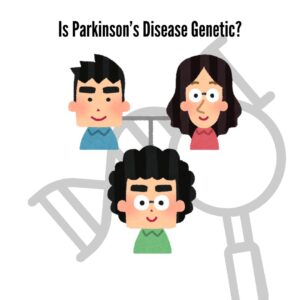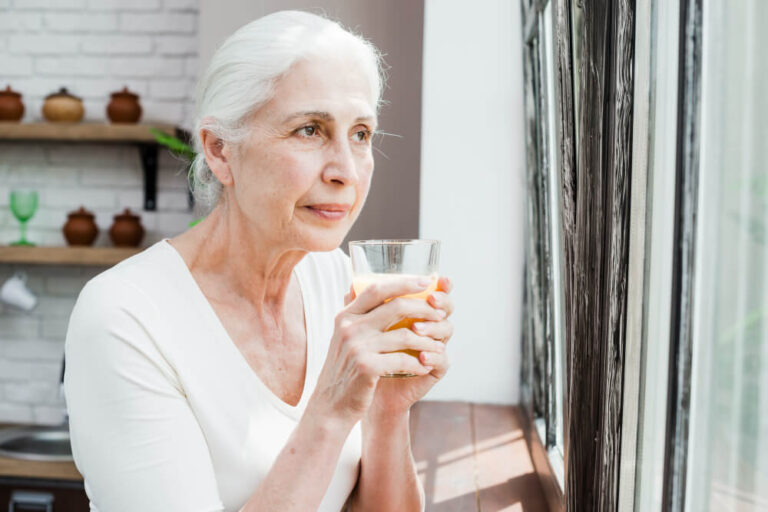Parkinson’s disease is often surrounded by questions, myths, and uncertainties. Understanding this disease is the first step to empowerment, whether you’re looking for answers for a loved one or yourself. Today, we’re diving into the most searched questions on Google about Parkinson’s disease—from its causes to groundbreaking treatments like Deep Brain Stimulation (DBS) that offer hope for a near-complete recovery.
Dr. Paresh Doshi, India’s foremost expert in Parkinson’s care and the first in the country to perform DBS surgery, has transformed countless lives through his pioneering work. Let’s clear the confusion, tackle the tough questions, and uncover the remarkable advances in Parkinson’s care under the expertise of one of the best in the field.
Stay with us—you won’t want to miss this!
1. Is Parkinson’s Disease Genetic?

Parkinson’s disease can indeed have a genetic component, though it’s not solely inherited in most cases. Research indicates that about 10-15% of Parkinson’s cases are linked to specific genetic mutations, such as mutations in the LRRK2 gene, SNCA gene, PARK2 gene, and PINK1 gene. These genetic factors can play a role in both Early-onset Parkinson’s disease and Late-onset Parkinson’s disease, depending on the specific mutations involved.
In some families, the disease can follow autosomal dominant inheritance, meaning the mutation is passed down through generations, where one copy of the mutated gene is enough to cause the disease. In others, autosomal recessive inheritance may be observed, where two copies of the mutated gene are required for the disease to develop.
Having a family history of Parkinson’s disease increases your risk but does not necessarily mean that you will develop the condition. The majority of Parkinson’s cases are considered idiopathic, meaning the exact cause is unknown but believed to be influenced by both genetic and environmental factors.
2. What Worsens Parkinson’s Disease?

Several factors can exacerbate Parkinson’s symptoms, making daily life more challenging. Here are some common aggravating factors that can worsen the condition:
- Stress and Parkinson’s disease: High-stress levels are known to intensify tremors, muscle rigidity, and other symptoms. The body’s response to stress can trigger a worsening of motor and non-motor symptoms, including anxiety and depression.
- Infections and Parkinson’s: Infections can cause inflammation in the body, which may have a negative impact on Parkinson’s progression. Illnesses such as flu or respiratory infections can exacerbate symptoms and slow recovery. Dental and urinary tract infections are the most frequent causes of PD patients’ symptoms getting worse. If there is any acute worsening, ask your doctor to check for this.
- Medication side effects: Some Parkinson’s medications, especially those that affect dopamine levels, can have side effects that worsen symptoms. These side effects are not necessarily seen in the early parts of medical management, but they are seen later on as the disease progresses and if you have been taking medications for a very long time. It’s essential to work closely with your doctor to ensure that medication is optimized for your needs.
- Sleep disorders and Parkinson’s: Sleep disorders and Parkinson’s disease are closely linked. Lack of quality sleep or disrupted sleep patterns can aggravate Parkinson’s symptoms, such as rigidity and tremors, and negatively affect your mood and cognitive function.
- Diet and Parkinson’s disease: A poor diet can contribute to Parkinson’s progression, affecting everything from digestion to overall brain health. A balanced diet rich in antioxidants, healthy fats, and essential nutrients can support better management of symptoms. If you are taking medications, you should time the medications in relation to your diet because food intake impairs the effect of medications. There should be some gap between the medication and the food intake. It is also known that a high protein diet like paneer or red meat will interfere with the absorption of your medications, and hence your symptoms may worsen if you are consuming this in large quantitie.s
- Exercise and Parkinson’s: Regular exercise and Parkinson’s go hand-in-hand. Physical activity helps alleviate stiffness, improve mobility, and maintain muscle strength. A sedentary lifestyle can increase the risk of stiffness, poor posture, and immobility. Our research study undertaken at the Jaslok Hospital and Research Centre by Dr Paresh doshi has shown that doing music therapy or dance therapy under the guidance of a good clinician along with meditation helps to slow down the progress of Parkinson’s disease.
3. Can Parkinson’s Disease Be Cured?

While Parkinson’s disease does not have a complete cure, it can be effectively managed. One revolutionary treatment is Deep Brain Stimulation (DBS) surgery, which offers a 95-98% improvement in symptoms for suitable candidates. This advanced surgical procedure involves implanting a device that sends electrical signals to specific areas of the brain, significantly improving movement and reducing tremors.
Dr. Paresh Doshi, a pioneer in Parkinson’s care in India, was the first in the country to perform DBS surgery. Under his expert care, countless patients have regained control of their lives and dramatically improved their quality of life.
4. Is Parkinson’s Disease Curable?

While there is no complete cure for Parkinson’s disease, advancements in treatment, especially Deep Brain Stimulation (DBS), have made it highly manageable. DBS surgery helps control Parkinson’s symptoms to such an extent that many patients experience a near-normal lifestyle. This surgical procedure targets areas in the basal ganglia—the part of the brain responsible for motor control—by sending electrical signals to help alleviate motor symptoms such as tremors, bradykinesia (slowed movements), and rigidity.
Although the underlying neurodegenerative disease causing dopamine deficiency is not entirely eradicated, Parkinson’s treatment options like DBS allow for significant improvement in movement and quality of life. It can also help reduce non-motor symptoms such as depression, sleep disturbances, and Parkinson’s-related dementia, making the condition more manageable.
For patients suffering from advanced Parkinson’s symptoms, DBS has proven to be a breakthrough treatment that can drastically improve daily functioning. It has provided significant relief from motor symptoms such as tremors and rigidity, enabling people with Parkinson’s disease to regain control over their movements and overall health.
With the right diagnosis and timely treatment, Parkinson’s disease can be managed effectively, allowing those living with it to maintain an active, fulfilling lifestyle.
5. Parkinson’s Disease: Which Part of the Brain Is Affected?

Parkinson’s disease primarily affects the substantia nigra, a region of the basal ganglia in the brain responsible for producing dopamine. Dopamine-producing neurons in this area gradually degenerate, resulting in dopamine deficiency. This Parkinson’s brain impact leads to the hallmark Parkinson’s motor symptoms, such as tremors, bradykinesia (slowed movements), rigidity, and postural instability. The loss of dopamine contributes significantly to Parkinson’s progression, making it difficult for the brain to control coordinated movements.
As the disease advances, the accumulation of alpha-synuclein protein in the brain leads to the formation of Lewy bodies, which are abnormal clumps of protein inside nerve cells. These Lewy bodies are associated with the degeneration of dopamine-producing neurons and contribute to the neurodegeneration seen in Parkinson’s disease. Additionally, mitochondrial stress may exacerbate neuronal damage, further accelerating Parkinson’s progression.
As the disease progresses, it also affects other brain regions in Parkinson’s, which can lead to cognitive decline in Parkinson’s, such as difficulty with memory, thinking, and problem-solving. The degeneration of these brain regions, along with the accumulation of Lewy bodies, can result in Parkinson’s-related dementia in later stages.
6. Can Parkinson’s Disease Cause Death?
Parkinson’s disease itself is not considered fatal. However, complications of Parkinson’s disease arising from advanced stages, such as pneumonia, falls, or severe difficulty swallowing (which can lead to choking or malnutrition), can increase the risk of mortality. These complications can affect Parkinson’s progression and are critical factors in understanding Parkinson’s disease life expectancy.
The survival rate in Parkinson’s disease varies, with life expectancy largely depending on when the disease is diagnosed, the patient’s age, overall health, and the effectiveness of treatment. Parkinson’s and lifespan can differ widely among individuals, but with proper care, many people with Parkinson’s can live long and fulfilling lives. The key is managing the disease through early diagnosis and consistent Parkinson’s disease treatment to help slow Parkinson’s progression.
As Parkinson’s disease progresses through its stages, the severity of symptoms increases, and the need for ongoing medical attention becomes more important. Early intervention and proper management can significantly improve the Parkinson’s disease treatment and life expectancy by minimizing complications and improving quality of life. Factors affecting life expectancy in Parkinson’s include age, comorbidities, the rate of disease progression, and the effectiveness of treatments, such as medications and therapies that address both motor symptoms and non-motor symptoms.
Still Have Questions? Let’s Talk!
Understanding Parkinson’s disease can be overwhelming, but you don’t have to navigate it alone. If you still have questions or need more clarity, book an appointment today with Dr. Paresh Doshi, India’s leading expert in Deep Brain Stimulation surgery. Call us at 9930960960 to take the first step toward a better life.
Your health and well-being are our top priorities, and we’re here to support you every step of the way.
#turmeric #fenugreek

